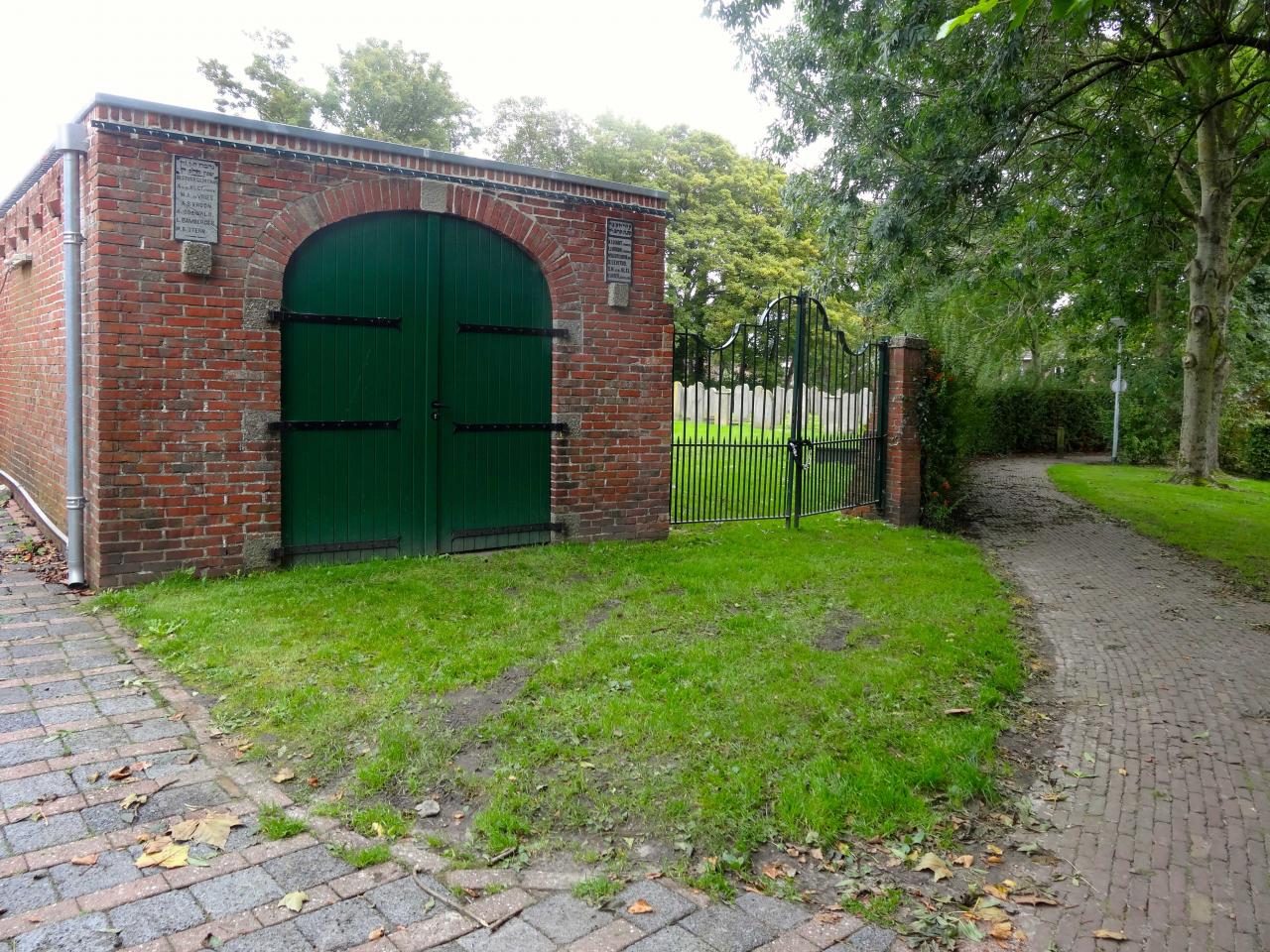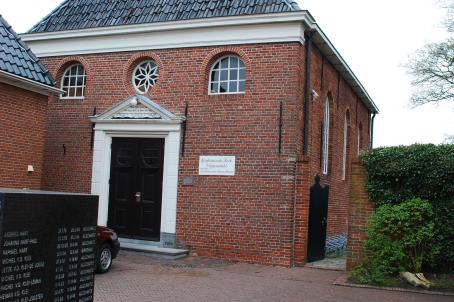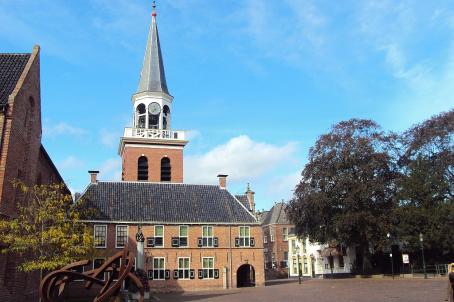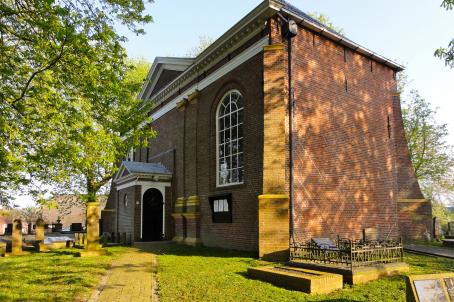Metaheerhuisje
This is a simple, small building that was put on the Jewish cemetery in 1930 as the successor of the first 'lykenhuisje' from 1900.
About this building
Both doors at the back are remain from the original building. The original function of the meta-house was the ritual cleaning of the dead and the preparation for the funeral. Furthermore, a special service was held prior to the funeral, including a speech in support of the deceased.
Together with the former synagogue in Appingedam, the metaheerhuisje is an information point in which the story of the Jewish people of Appingedam is represented in words and pictures. On glass panels you can read about the original function of the house and the rituals. There is also information about the cemetery and about the people buried in the Jewish cemetery.






